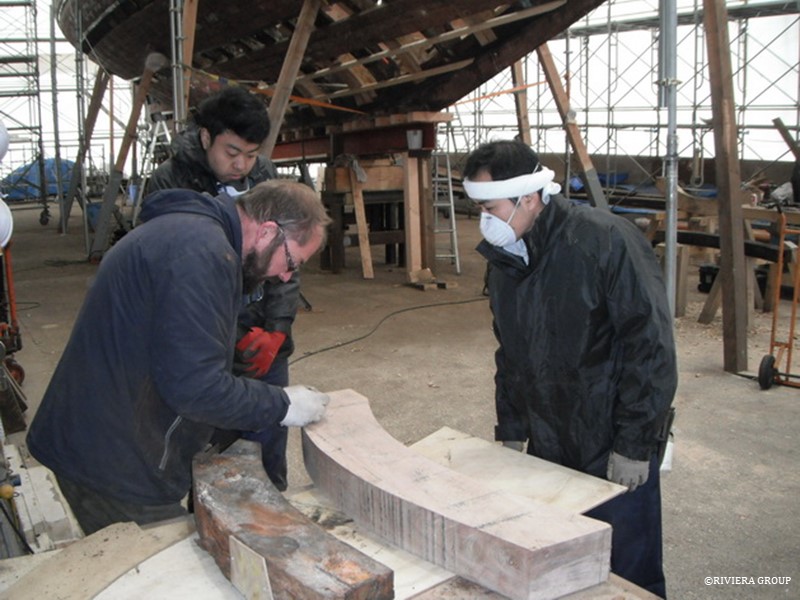December, 2017
This month saw the removal, packing and shipping of a number of items to be repaired, restored, or used as models for making new versions, when that was necessary.
The bronze quadrant, which is part of the steering mechanism (above), the portholes and the keel bolts (below) were readied to be sent to the UK. A minor crack that had been repaired earlier was discovered in the quadrant, so we decided to send it along and have it checked over.
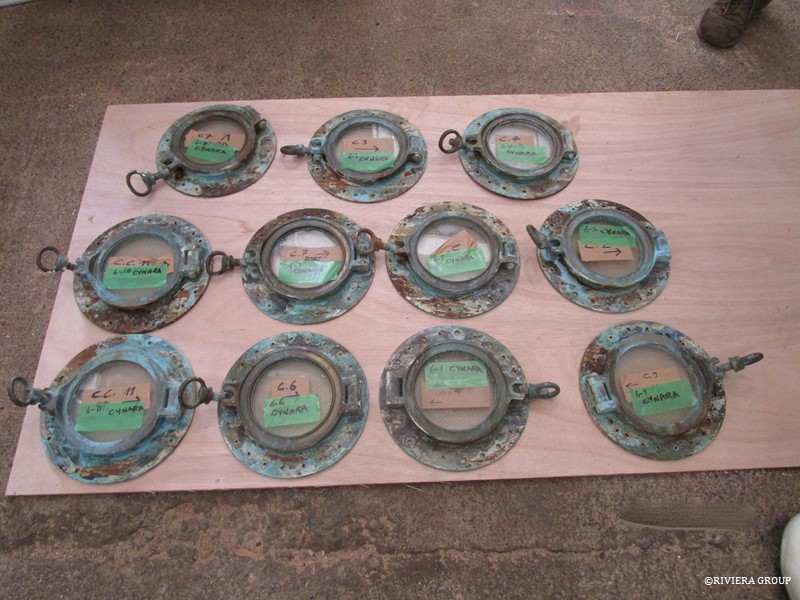

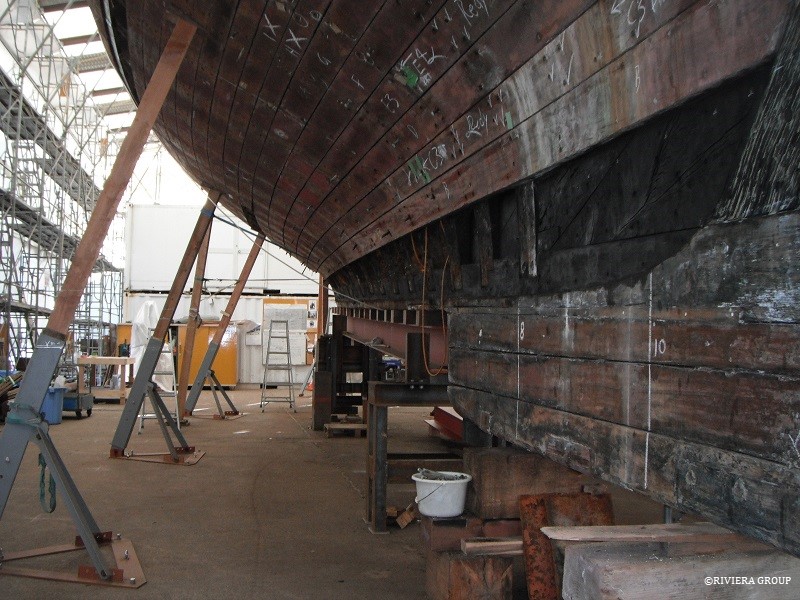
The false keel prior to removal (above) and after (below).
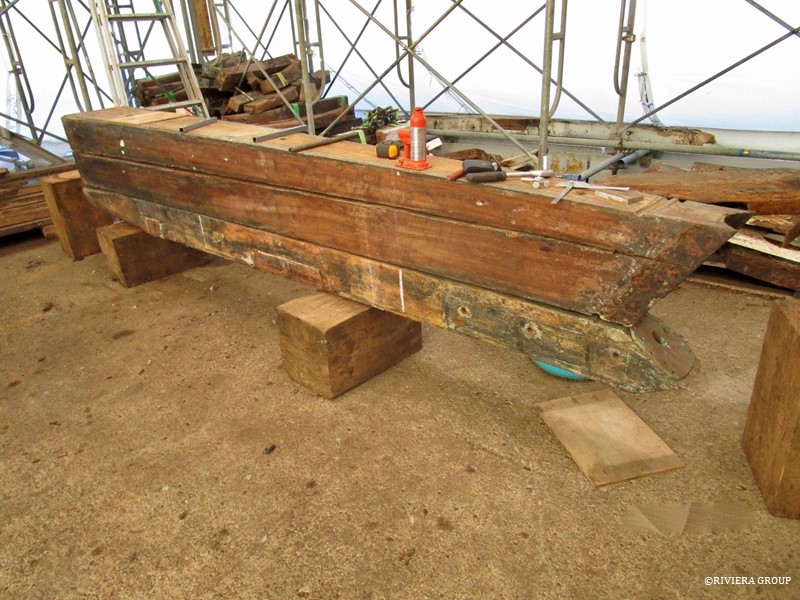
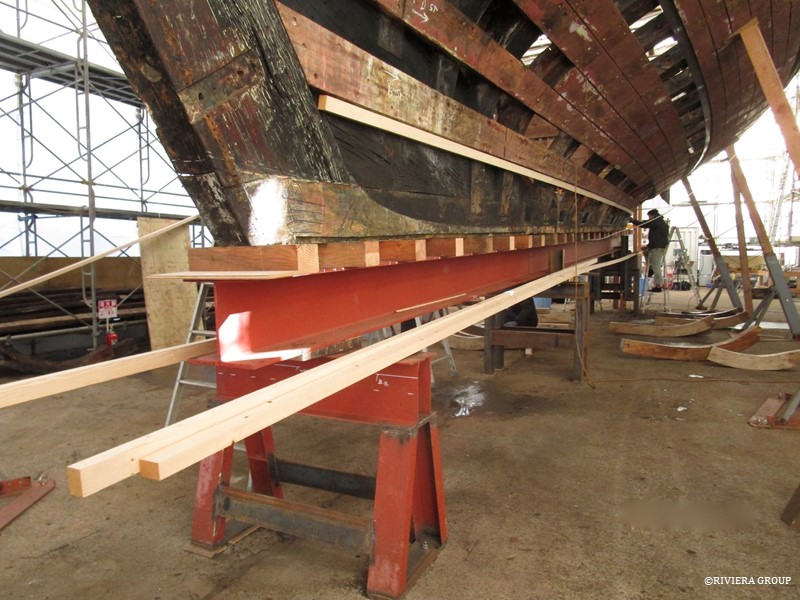
The large H beam that would be used as the strong back arrived, and was moved under the wood keel to support the yacht and keep the keel straight while work proceeds. To support the beam and the boat, heavy duty steel tables were welded onsite and securely bolted to the floor.
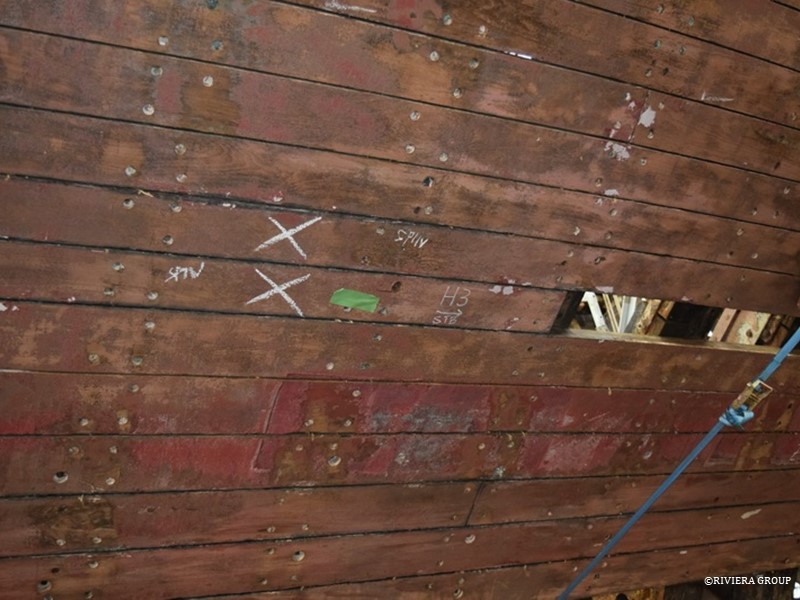
Certain strakes—a line of planks from stem to stern—were selected for removal (above). We tried to remove strakes that approximately followed the diagonal lines of the drawings. The process went like this: The bungs are removed from over the riven heads on the outside of each plank. Then the heads of the rivets are ground down to remove the burr over the clench rings that hold them.
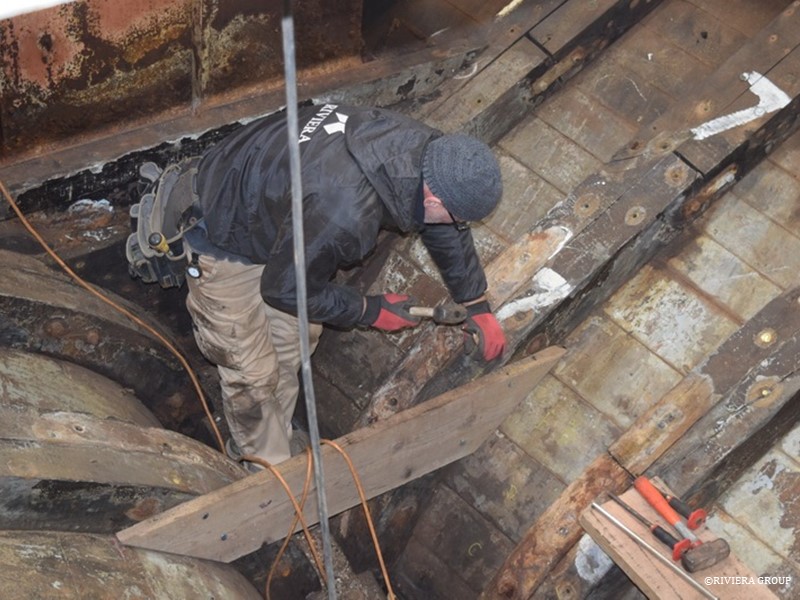
Then someone (Pascal in this case, above) drives the rivet out from the inside, while someone on the outside (Kawashima in this case, below) ensures the rivet comes out clean. Each plank on average had a 7/16 inch rivet and two 4 inch nails, or dumps, at each double frame.
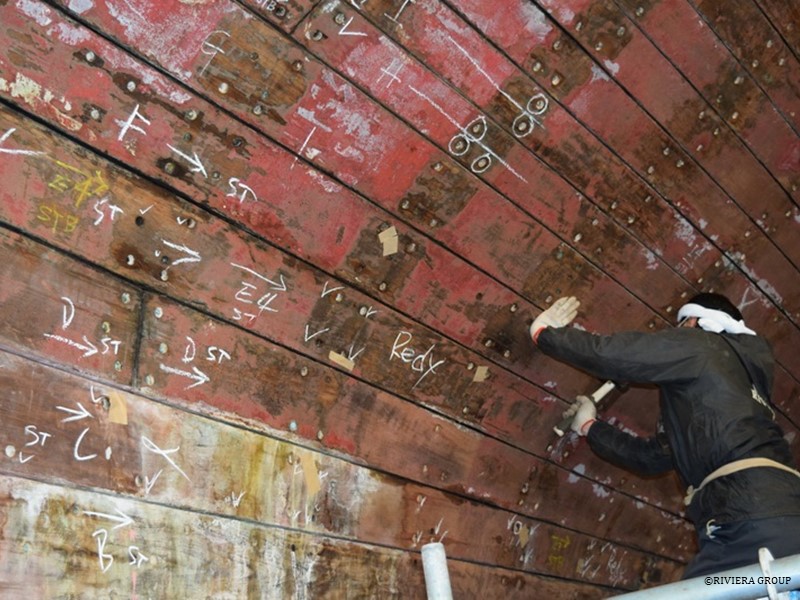
Planks are marked with a letter and a number and holes are highlighted depending on whether it’s a dump or a rivet to be removed. Even with the fastenings removed, remnants of oakum and swollen timber, submerged for decades, still makes them a challenge to release.
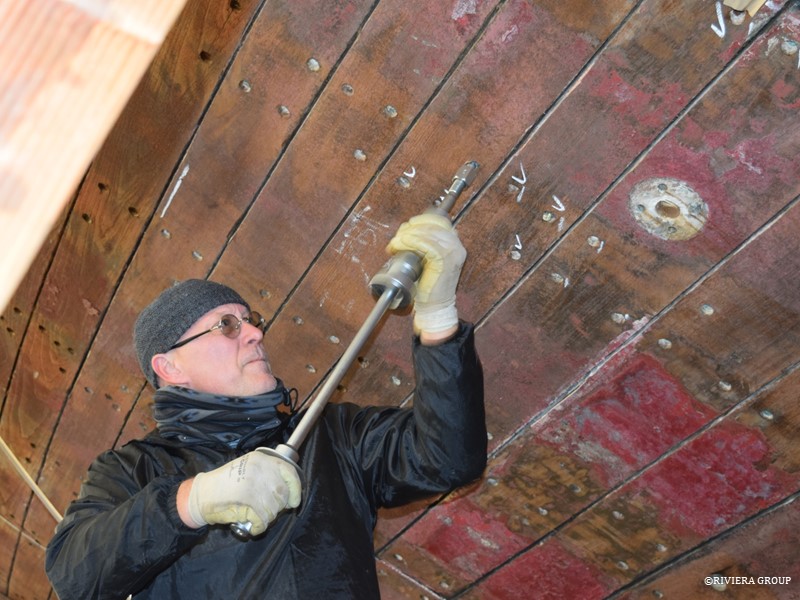
Pascal (above) removing one of the dumps (below).
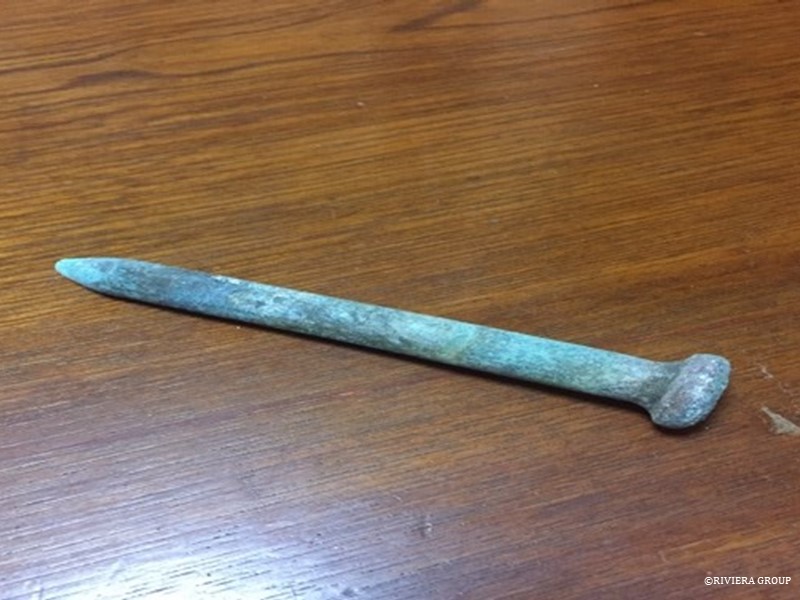
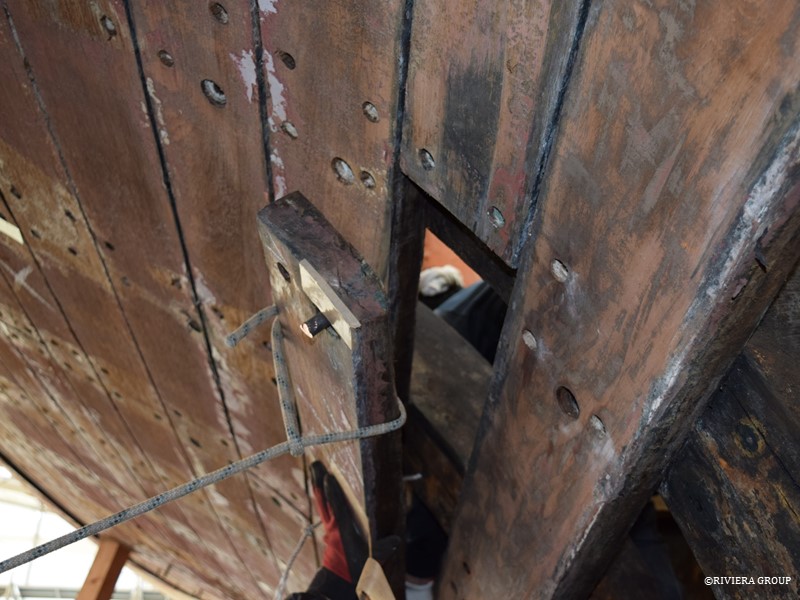
The hull planks are always tough to remove, as they are swollen from 90 years of saturation. Making it even more difficult was the fact that the boat was out of shape, adding tension to the hull. Add to that the deep caulking and the “edge set” planks—meaning that straight planks are bent to fit the curve of the strake. After prising one end free (above), we lash it to something stout or add tension using a small block and tackle (below).
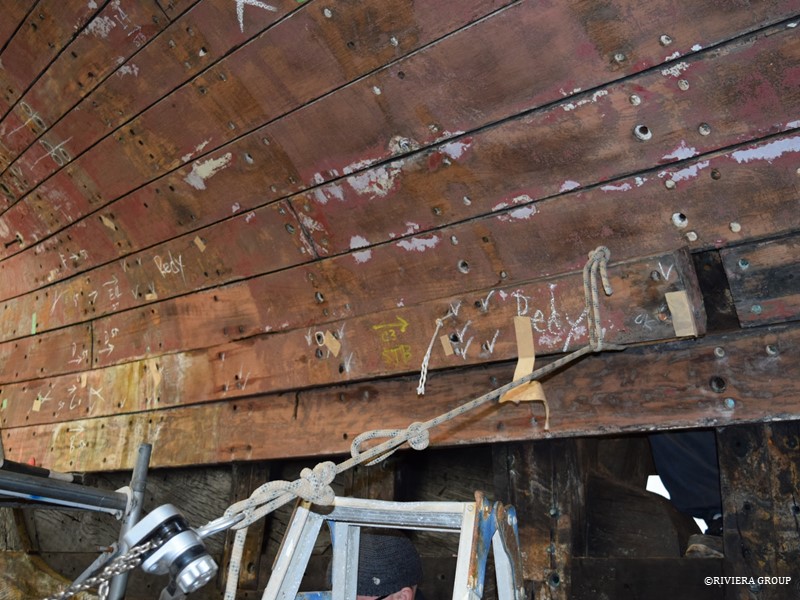
Holding the plank away from the hull as it is teased out helps to take the spring out of the 2-inch teak planks. It also allows room for a wedge between the plank and the frame. Each blow on the wege gains us a few millimeters as the stubborn planks come slowly out.
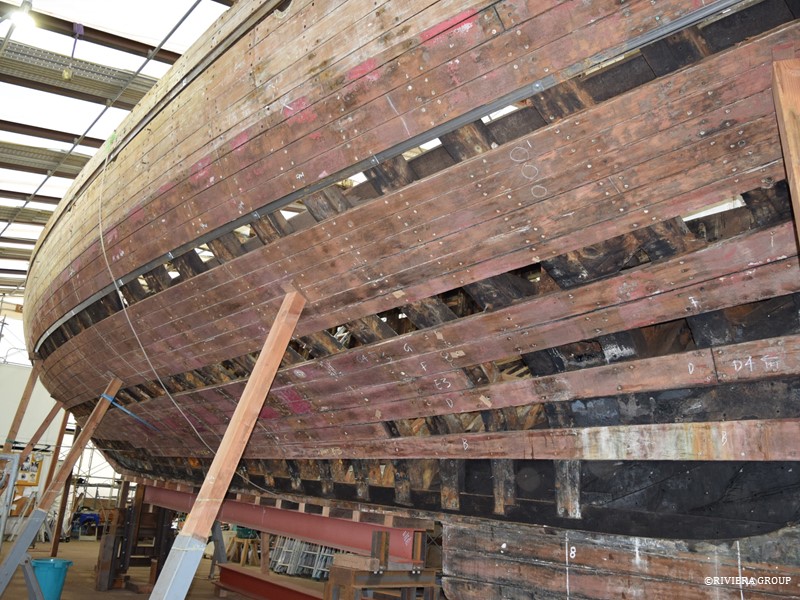
We remove full strakes to ease the tension in the hull, allowing it to move more easily. Broad strakes in the stern have been removed to expose the futtock ends at the stern knee.
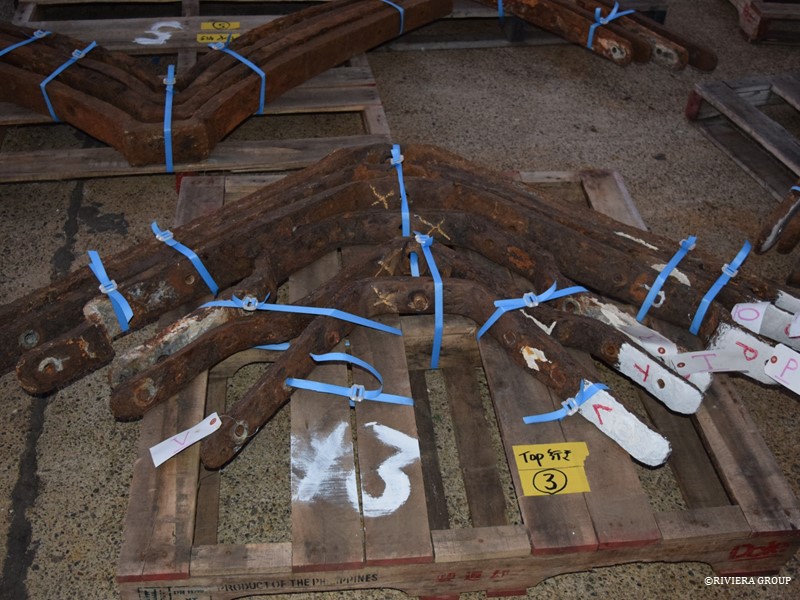
Wrought Iron floors are labelled and stacked on pallets to be shipped to the UK. It was decided it was going to be more efficient to send the original floors rather than fabricate complicated patterns against frames that were in poor condition and would be changed. The foundry could make accurate copies. Simple patterns were kept onsite so that new frames would maintain the correct profile but the complicated twist and shape of each floor could be forged using the originals. The floors are not cast, but forged from billets of iron. Each one is unique.
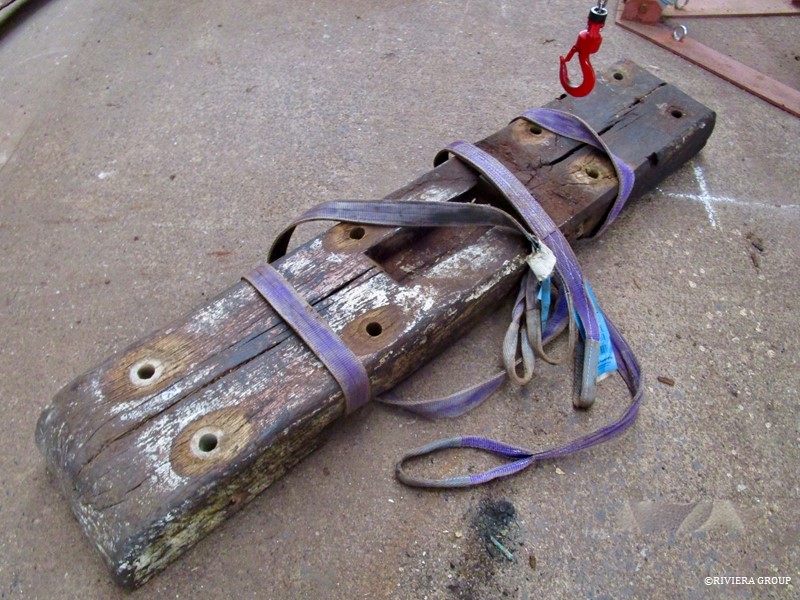
Also removed from the boat this month were the main mizzen step (above) and the generator bed (below).
